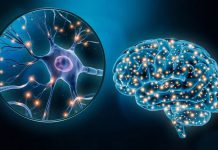Certain cells in the human brain are found to be still active even after death, while some cells increase their activity and even grow, according to a new study from the researchers of the University of Illinois Chicago.
The researchers, who published their study in the journal Scientific Reports, analyzed gene expression in fresh brain tissue multiple times after removal to simulate the post-mortem interval and death, according to Science Daily.
The team found that in some cells, the gene expression increased after death And those cells have been called the “zombie genes,” which were specific to a type of inflammatory cells called glial cells.
The study found that glial cells grow and sprout long arm-like appendages for hours after death.
Corresponding author of the study Dr. Jeffrey Loeb said, “That glial cells enlarge after death isn’t too surprising given that they are inflammatory and their job is to clean things up after brain injuries like oxygen deprivation or stroke.”
He said the implications of this discovery are significant, adding, “Most studies assume that everything in the brain stops when the heart stops beating, but this is not so. Our findings will be needed to interpret research on human brain tissues. We just haven’t quantified these changes until now.”
Dr. Loeb and his colleagues noticed that this gene expression in fresh human brain tissue did not match brain gene expression from people without neurological disorders or from people with neurological disorders.
“We decided to run a simulated death experiment by looking at the expression of all human genes, at time points from 0 to 24 hours, from a large block of recently collected brain tissues,” he added, “which were allowed to sit at room temperature to replicate the postmortem interval.”
The team found that about 80% of the genes remained relatively stable for 24 hours — their expression did not change much. “These included genes often referred to as housekeeping genes that provide basic cellular functions and are commonly used in research studies to show the quality of the tissue,” Dr. Loeb explained.
“Another group of genes, known to be present in neurons and shown to be intricately involved in human brain activity such as memory, thinking and seizure activity, rapidly degraded in the hours after death. These genes are important to researchers studying disorders like schizophrenia and Alzheimer’s disease,” he added.
The third group of genes, called the “zombie genes,” increased their activity at the same time the neuronal genes were ramping down, according to Science Daily.
“Our findings don’t mean that we should throw away human tissue research programs, it just means that researchers need to take into account these genetic and cellular changes, and reduce the post-mortem interval as much as possible to reduce the magnitude of these changes,” Dr. Loeb said.
“The good news from our findings is that we now know which genes and cell types are stable, which degrade, and which increase over time so that results from postmortem brain studies can be better understood,” he added. The story originally appeared Tuesday on Science Daily.




















